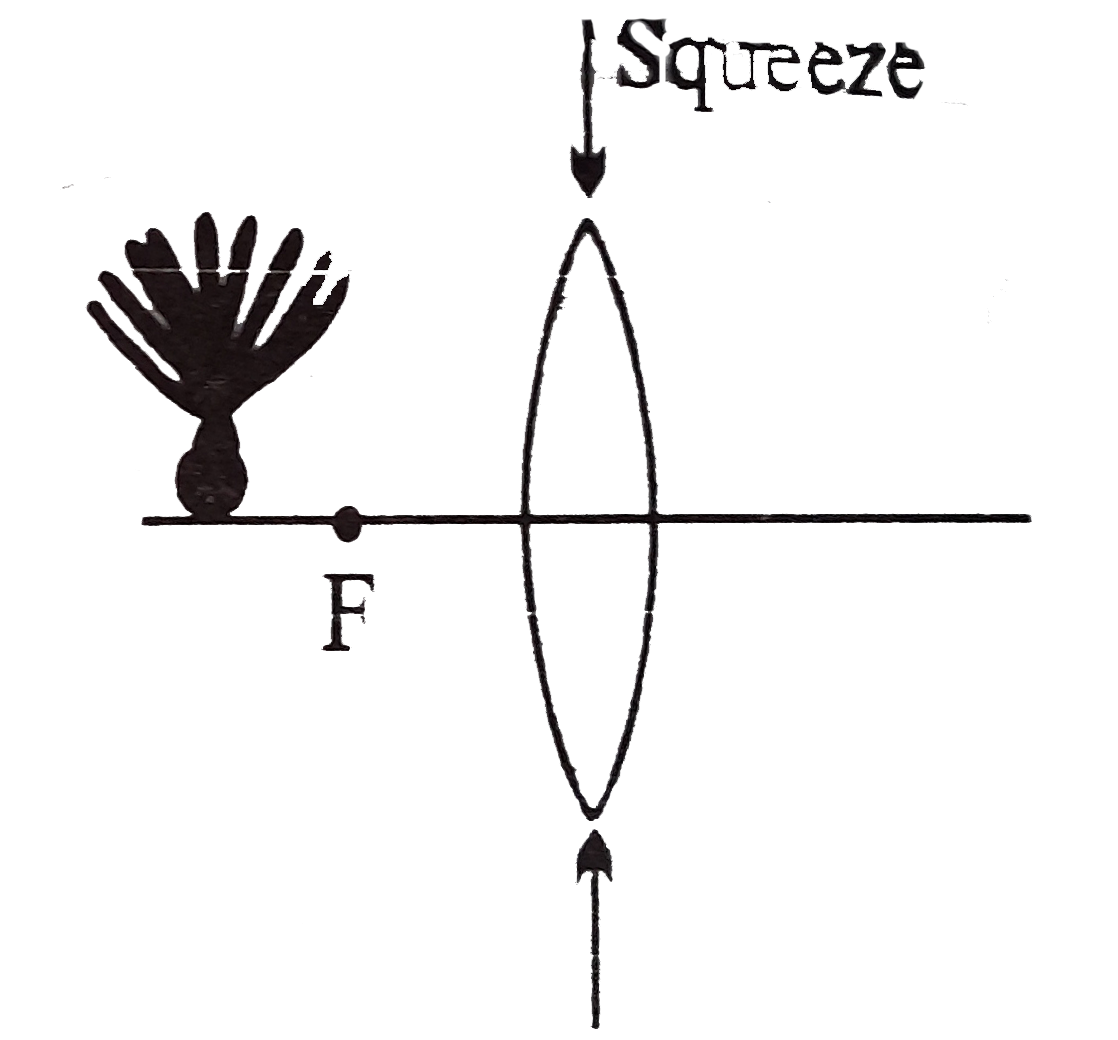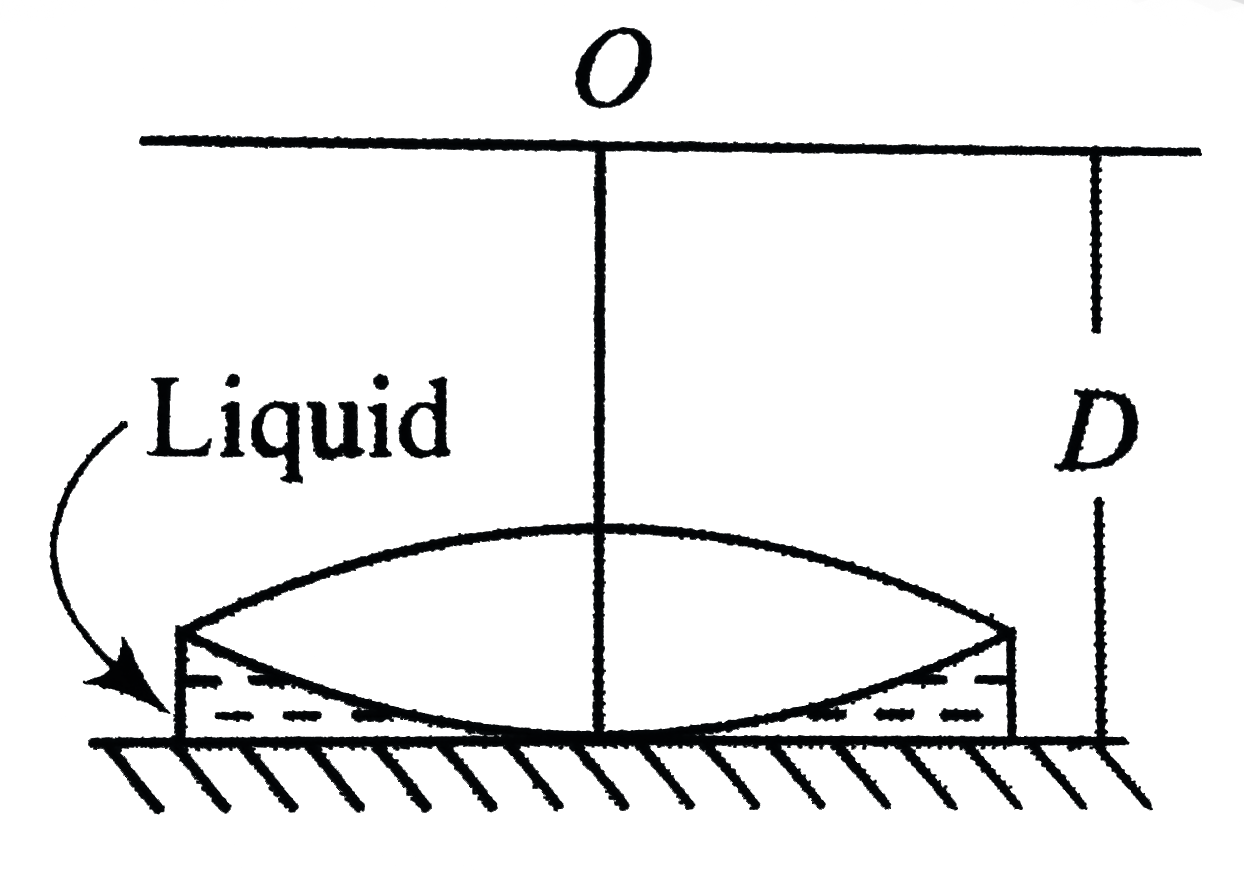A turnips sits before a thin coverging lens,outside the focal point of the lens.Teh lens is filled with a transparent gel so that it is flexible by,by squeezing its ends towards its center [as indicated in figure(a)],you can change the curvature of its front and rear sides
![A turnips sits before a thin coverging lens,outside the focal point of the lens.Teh lens is filled with a transparent gel so that it is flexible by,by squeezing its ends towards its center [as indicated in figure(a)],you can change the curvature of its front and rear sides When you squeeze the lens,the lateral height of image.](https://d10lpgp6xz60nq.cloudfront.net/physics_images/NG_PHY_RO_C01_E01_121_Q01.png)
When you squeeze the lens,the lateral height of image.
increases
decreases
remains same
data insufficient
The correct Answer is:B
Since Image of object is moving Towards R so lateral magnifation will decrease therefore laterial height will decrease.
Similar Questions
The radius of curvature of the convex face of a plano-convex lens is12cm and its refractive index is1.5(a)Find the focal length of this lens.The plane surface of the lens is now silvered.(b)AT what distanc efrom the lens will parallel rays incident on the convex face converage?(c)Sketch the ray diagram to locate the image,when a point object is placed on the axis20cmfrom the lens(d)Calculate the image distance when the object is placed as in (c).
View SolutionBottom of a glass beaker is made of a thin equi-convex lens having bottom side silver polished as shown in the figure. Water is filled in the beaker upto a height 4m. The image of poin to bject,floating at middle point of beaker at the surface of water coincides with it. Find out ther adius of curvature of the lens.Given that refractive index of glass is 3/2 and that of water is 4/3.

View Solution
Knowledge Check
A turnips sits before a thin coverging lens,outside the focal point of the lens.Teh lens is filled with a transparent gel so that it is flexible by,by squeezing its ends towards its center [as indicated in figure(a)],you can change the curvature of its front and rear sides

When you squeeze the lens,the imageAmoves towards the lensBmoves away form the lensCshifts upDremains as it isA turnips sits before a thin coverging lens,outside the focal point of the lens.Teh lens is filled with a transparent gel so that it is flexible by,by squeezing its ends towards its center [as indicated in figure(a)],you can change the curvature of its front and rear sides

Suppsoe that the image must be formed on a card which is at a certain distance behind the lens [figure(b)],while you move the turnip away form the lens,then you should
 Adecreases the squeeze of the lensBincreases the squeeze of the lensCkeep the card and lens as it is.Dmove the card away form the lens
Adecreases the squeeze of the lensBincreases the squeeze of the lensCkeep the card and lens as it is.Dmove the card away form the lensA thin convex lens of focal length 30cm is placed in front of a plane mirror. An object is placed at a distance x from the lens (not in between lens and mirror ) so that its final image coincides with itself. Then, the value of x is
A15cmB30cmC60cmDInsufficient data
Find the positions of the perinciple planes, the focal and model points of a thin biconvex symmetric glass lens with curvature radius of its surfaces equal to R=7.50cm. There is air on one side of the lens and water on the other.
View SolutionThe redius of curvature of the convex face of a plano-convex lens is 12cm and its refractive index is 1.5.
a. Find the focal length of this lens. The plane surface of the lens is now silvered.
b. At what distance form the lans will parallel rays incident on the convex face converge?
c. Sketch the ray diagram to locate the image, when a point object is places on the axis 20cm from the lens.
d. Calculate the image distance when the object is placed as in (c).
View SolutionOn a horizontal plane mirror, a thin equiconvex lens of glass is placed and when the space between the lens and mirror is filled with a liquid, an object held at a distance D which is 30cm vertically above the lens is found to coincide with its own image as shown in Figure. If equiconvex lens of glass has refractive index μ=1.5 and radius of curvature R=20cm then find refractive index of the liquid.

View SolutionA point object is placed in front of a silvered plano convex lens of refractive index n radius of curvature R, so that its image is formed on itself. Then the object distance is equal to

View SolutionIf the eye is kept very close to a coverging lens (focal length =10cm) and at the optical centre of the lens and an object is kept at distance 'd' of the object from the lebs so that its image can be seen clearly by the defect free eye is :
 .
.
View Solution

